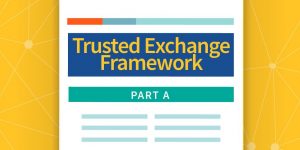The use of health informatics continues to expand around the world, leading to new uses of data and technology for healthcare companies and new job opportunities for those with an education in health informatics.
How big is this expansion? Kenneth Research recently projected the market will reach $33 billion worldwide by 2023. They anticipate this growth as more healthcare companies become aware of how clinical informatics can lead to better interoperability between healthcare systems, more efficient patient data management and better treatment and health outcomes.
Areas of Growth in Health Informatics
The growth of the health informatics industry is spread across all areas, including software and applications. End users of these systems include hospitals, doctors’ clinics and specialty centers.
Types of software and applications that are growing rapidly include:
- Cloud-based software
- Diagnostic programs in the application segment
- Patient monitoring systems
- Integrated lab informatics and lab automation systems
The laboratory segment alone has seen an explosion in growth, according to market research. The location with the biggest growth is Asia. Programs within the segment include laboratory information management systems, electronic lab notebooks, chromatography data systems, electronic data capture and clinical data management systems.
As in other areas, informatics systems in labs is expected to lead to efficiency in how the lab is operated, fewer errors in handling complex records, better outcomes and regulatory compliance.
Why This Matters
The current and potential use of technology in healthcare is a frequently written about issue. Typically, it’s discussed in the context of a healthcare system that is increasingly under pressure as an aging population needs more medical services and regulatory measures evolve. Informatics can support better strategies in how healthcare organizations approach these and other issues.
For example, the use of electronic health records (EHR) has resulted in the collection of enormous amounts of data. Sharing that information between medical providers, healthcare operations and insurance companies has made record-keeping more accurate and easier to manage.
But now many healthcare operations are taking the next step of improving patient health outcomes. Some of the potential uses in this area include the following.
Improving population health. Used correctly, data analytics programs can spot indicators in specific population demographics that indicate potential health risks, including diseases or problems with antibiotic resistant superbugs.
Improving diagnostics. Sophisticated software programs offer support for medical professionals making clinical decisions, providing them with information that can help them make the best choices in prescribing treatment.
Predictive analytics. The term predictive analytics refers to the ability of machine learning and artificial intelligence systems to crunch vast amounts of data on millions of patients and find indicators that certain events will take place. For example, signs that a heart attack victim treated at a hospital will be readmitted for treatment within the next 30 days.
Patient-involved care. This branch of health informatics involves patients using sensors at home which record health information and then transmit that information to a system that can give them advice on best practices for certain conditions. These systems also contact healthcare professionals to intervene if the data indicates a patient is at high risk for a medical emergency.




